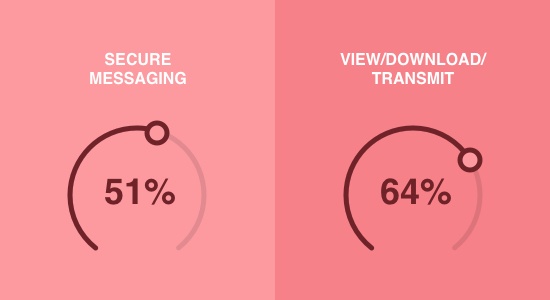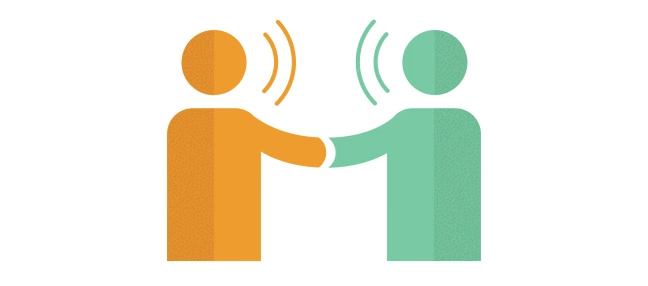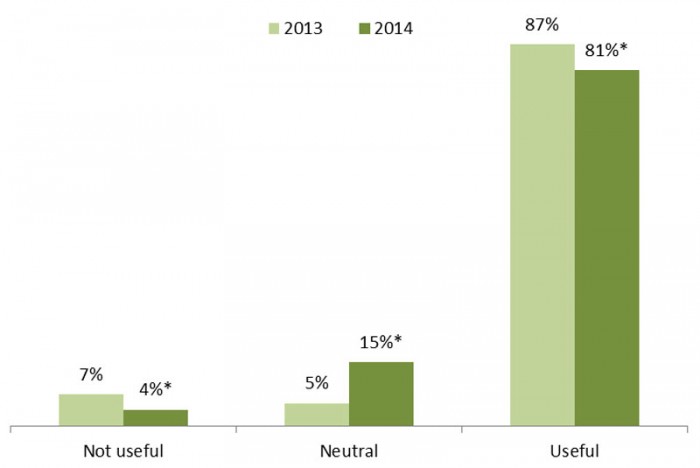With advancements in every sector, medical professionals are also taking a step further and exploring the modern advancements with the help of patient portals. What are these patient portals and how do they impact the patients and the overall healthcare transformation in 2022? How do these portals help generate business? Let’s find out!
Patient portal website is a much-talked technology of the coming age, especially for hospitals and medical professionals. However patient portals use ‘THE TOOL’ to boost-out patient engagement?
This blog explains in detail what are patient portals and how does it prove to be worthwhile for your patients?
Table of contents:
What are patient portals? How often are patient portals used? What are the benefits of integrating Patient Portal?
Better patient communication
Effective patient registration and administrative work
Focus more on patient care
Better patient-physician relationship
Improving clinical outcomes
Analyse clinical workflow
User-Friendly interface
Responsive app
Online registration
API integration
Encrypted messaging
Systematic payment
On-Demand Healthcare
Big Data
What are patient portals?
A patient portal is a website that is connected online to the electronic health record. It helps patient access all of their data. Thus, a healthcare portal lets you have access to various data types such as their lab results, family histories, summaries or immunization history. An ideal portal should provide you all of this data.
An online patient portal software comes with a lot of features such as direct secure messaging, scheduling an online appointment and securely paying your bills online.
However, a large number of them do not have such elaborate data. The data available through these portals depends on the portal vendor and the standards of the respective healthcare family.
Hire on-demand dedicated developers of desired skill & experience.
How often are patient portals used?

Medical portal websites are becoming increasingly popular these days. According to the National Information Technology(ONC), 64% of hospitals let their patients access the health data, and 51% had the secure texting feature enabled on these portals.
The patient portals are not just restricted to laptops and can be accessed through mobiles and tablets as well. According to a recent survey conducted by HIMSS, 58% of healthcare professionals connect to their patients using mobile-optimized patient portals. The web portal development company have a major role here as they use these tools to help boost the portal by increasing patient engagement and thus help the medical professionals serve outside their clinics.
What are the benefits of integrating Patient Portal?
Having access to their own health records brings awareness amongst the patients about their health. Thus, they are prepared to interact better with their providers and understand their conditions better.
Patient portals and other patient engagement apps increase patient loyalty. Several features like secure messaging help develop a strong bond between patient and their doctors, which makes them feel comfortable with their needs, hence they keep coming back to the same professional again and again.
Having your health records by your side all time keeps the patient mentally prepared and they can intervene early if they have too, thus saving them for a long term disease.
Better patient communication
Patients are able to use the portal to complete tasks that usually require one phone call or multiple phone calls. This ability to make appointments, referrals and prescription requests directly from the portal for patients enhances the efficiency of your clinical staff, allowing you to have a lot of patient help in which you need very urgent care and questions.
Effective patient registration and administrative work
The patient portal development allows the registration forms to be completed electronically before check-in, keeping the office work functional. This means what form patients need to fill out instead of walking and how, your front office fee staff can focus on the patient and answer the questions they need, making sure the patient feels comfortable until they reach you. Is. The medical side is medical in nature with the administrative side of things and only their remaining questions. Ultimately, it turns into cost savings for you to practice and deliver better care.
Focus more on patient care
The ability to easily access and share patient information today makes it one of the major barriers to physicians’ time. Instead of focusing on finding what you want in the patient chart or focusing on finding a record of what provider you are providing to your patient, you just focus on providing a high level of care. That’s why you became a doctor in the first place.
Better patient-physician relationship
Patient portals provide the ability for patients to have 24-hour access to connect with their provider by reviewing patient health information, asking and answering questions, and reviewing notes, making the patient-physician relationship closer than ever.
Improving clinical outcomes
The patient’s portal performs tasks such as making prescription refills and referral requests easier and more convenient, making patients more relevant – and when patients follow doctors ’orders, clinical outcomes improve.
Analyse clinical workflow
With the Patient Portal, with the help of staff the tasks that patients would otherwise complete can be completed electronically. Employees can be relieved of their appointments by giving patients online giving access, writing about the need for refills and answering questions about referrals. Reporting laboratory results and not mentioning taking messages for physicians. Once spent in these tasks the time can be used to perform other duties, ultimately making the provider’s life easier.
Core features of an intuitive Patient Portal App
Most medical facilities in the country already have patient portals in place, so the next step in overcoming the barriers to their adoption is to expand these systems to deliver facilities that will include more patients.
User-Friendly interface
The clunky and inconsistent user interface is a big problem that makes it impossible for many patients to create sign-up screens in the past. If patients are motivated to use the self-service portal when the counter UI crashes, however, their initial excitement quickly leads to frustration and resignation.
Disappointing experiences with the patient portal can frustrate patients with any future attempts to use it. For that reason, one of the first improvements to consider for any existing patient self-care system should be UX optimization. A skilled frontline development team can enhance the design and navigation of any patient portal, creating a seamless user experience and involving patients.
Responsive app
The smartphone market share in the US is over 70%. The general migration towards mobile devices also affects healthcare industry in its digital transformation, as they are increasingly involved in their health using mobile devices.
To overcome this trend, patient portal development company supports custom mobile patient portal solutions that allow users to go on their health journey. Smaller medical providers are also taking advantage of out-of-the-box apps and extending them to deliver patient self-care capabilities on mobile devices.
Online registration
Digital patient registration forms simplify the registration process for patients to fill in their details and consent in a simple and time-efficient manner before the appointment of their first details.
By reducing patient waiting times in medical facilities and enabling secure end-to-end control over the data presented, the digital form is an easy way to encourage patient communication. Forms benefit healthcare transformation in 2020 by reducing the front-desk burden, reducing the likelihood of clinical errors, streamlining patient flow, and delivering a holistic view of the patient and his or her medical history.
Many available patient portals already support online registration and others can be easily expanded with custom functionality or integrated with one of the available she f-the-shelf solutions.
API integration
While most patient portal solutions support integration with basic EHR systems, by expanding the open API, they can also connect to other third-party digital solutions and medical IoT devices, such as step counters, glucose monitors, or sleep trackers.
When patients associate their portal profile with e-health wearable devices, they can automatically upload and sync all their health data over time to get detailed information about their health and well-being.
Thanks to the flow of real-time information between various tracking devices and health systems, clinicians can make regular and easy-to-report clinical and treatment decisions that can diagnose a patient.
Encrypted messaging
Top patient portal solutions, like those of Nextech, MyChart, or Athena, embed secure messaging to offer an alternative to face-to-face medical appointments through asynchronous, direct communication with physicians.
Such interactions may be particularly beneficial for patients with chronic diseases or mobility issues and those living in remote areas. Due to the highly sensitive nature of data processed by regulatory compliance requirements on patient portal systems and healthcare providers (HIPAA, to begin with), all patient-physician communications must be properly protected with data encryption.
Systematic payment
According to a Trans Union report, 62% of patients say that knowing their health-related costs in advance affects their chances of care, while care 68% of health care clients fail to pay their medical bill arrears.
To address these concerns, comprehensive patient self-service solutions such as Experience Health are a payment management component that supports a wide range of payment options while providing patients with greater transparency for health financial management.
These features include e-payment, billing queries, insurance support, payment history and recovery receipts and more. By expanding these features, health organizations can not only increase patient engagement and increase patient portal use, but also monitor and manage patient collection to increase recovery rates.
On-Demand Healthcare
When you talk of ‘on-demand,’ you think about users who want their demands fulfilled at their own convenience, at their own pace, and wherever they happen to be. The healthcare industry is digitally growing, as patients look for on-demand healthcare. Smartphones play an important role when diving into content marketing.
Users have become mobile in the last decade. Latest statistics show that more than 50% of all browsing across the globe occurs on mobile devices.
Big Data
Big data accumulates info relating to a business through platforms like online transactions, eCommerce, social media, and financial transactions, and identifies patterns for future use.
How to choose a Patient Portal
It is very common to bind the patient portal to an integrated EHR suite that includes additional medical software applications. Alternatively, the practices may choose to purchase the portal software as a standalone or integrated program. Once you decide if you need a stand-alone system or suite, there are several steps you can take to select a seller:
- Set research pricing and budget: Your budget will often determine how strong you are for your portal. Call our team of expert medical software consultants at +1-408-833-6470to receive free, custom price quotes on the patient portal tailored to your needs.
- Compare product screenshots: Simple, yet effective, it is very important to choose a portal with UI. This way, your patients will enter comfortably with minimal guidance.
- Read detailed product reviews: If you like the look of a particular portal, make sure the functionality and customer support it offers is equally impressive. You can do this by checking the actual user reviews of hundreds of patient portals on our website.
- Shortlist Five or six products: It can be difficult to narrow down your options so that a lot of systems run out. To speed up the process for free, email me or fill out a free online questionnaire.
- Contact the vendors on your shorted list: Once you have a manageable number system to evaluate, organize individual product demos with each vendor. This can help you weigh the pros and cons of choosing the right one with your team.
What does the target audience think?

While working on a project, it is always important to consider what your target audiences think about the same. In this case, it is your patients. According to ONC, more than 80% of the patients using online patient portal software found it extremely beneficial.
Another study showed that patients that used the patient portal actively had a higher rate of medication adherence for they were always alarmed about their treatment plans. Thus, not only do we have positive feedback from our target audience, it helps them take better care of their health, which is a win-win situation for both the parties.
Considering the plethora of benefits that the patients receive, they sure appreciate it and welcome it. However, the portal providers have their own set of benefits.
They manage to have a long term patient relationship, and not just building patient loyalty and enhancing care. This bidirectional relationship is not only a convenient option for medical professionals, but it also saves a lot of administrative burdens.
Hire dedicated team for your next web development project.
Conclusion
While medical portal website seems enticing for both the parties, they do not sound effective it takes a lot of effort to convince the patients. The count of a medical portal is surely increasing, but there is a lot of room for it to grow. Explaining the benefits of the portal is not just enough. The providers should be open to adoption with every encounter, which helps them grow as a brand.
Several factors such as the literacy rate of the patients, their age, etc play an important role in determining the success rate of the portal. Besides, with the elder people being more comfortable with the technology, it becomes easier for them to log in to a portal and check their mental health.
Thus, by understanding the increasing popularity of hospital patient portals and their uses, the hospitals can boost up patient engagement and increase their brand awareness. All they have to do is target their engagement strategies and make more use of the portal adoption, that helps them treat their patients in the longer run.
Get in touch with us info@perceptionsystems.com and we will help you transform your idea into a robust health web portal development solution.






